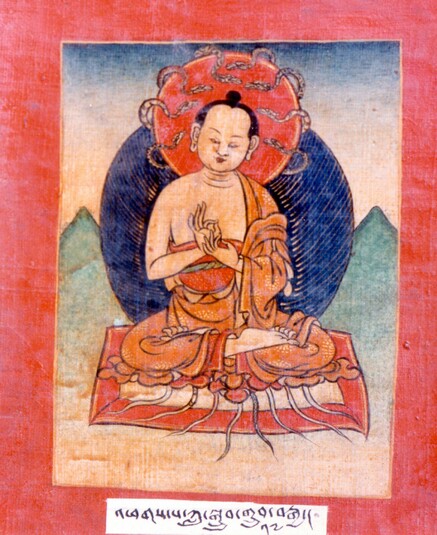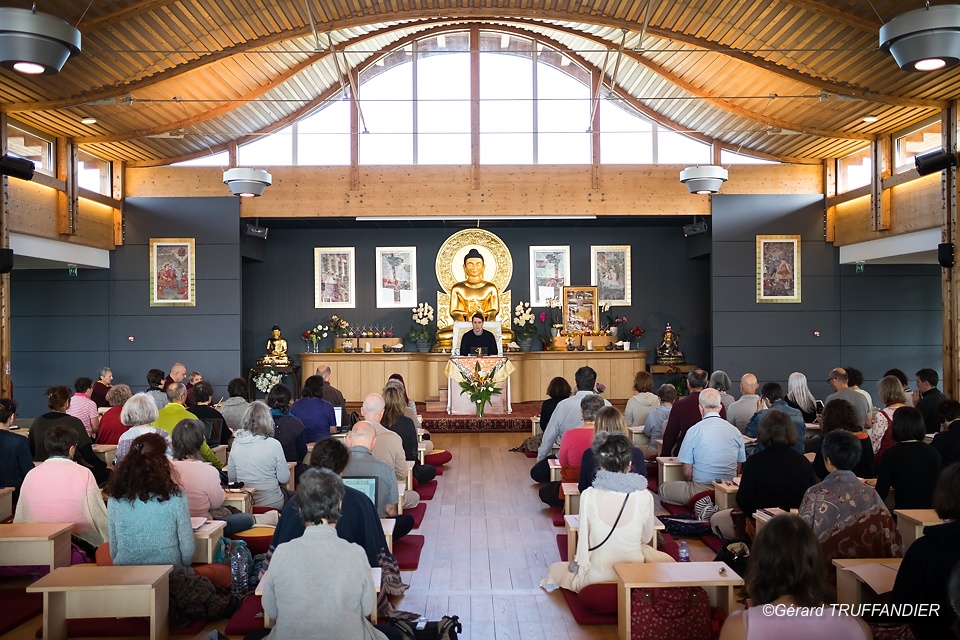Emptiness? A Fruitful Path

Emptiness? We seem to bump up against a wall each time we attempt to grasp this reality. It seems inaccessible to us. There are explanations for this difficulty. Indeed, the Heart Sutra, which describes emptiness begins by describing it as inexpressible and inconceivable!
And yet, during his teaching on emptiness, Trinlay Rinpoche maintains that, “On the whole, it’s simple. It is about understanding our initial reality.” This is not emptiness that is complex or sophisticated; it is rather what prevents us from recognizing it that is the real source of trouble.
Here, emptiness is not the opposite of full or fullness. It means “empty of that which we attribute to things.” If we dissect reality through well-executed analysis, we will see that what we consider to be phenomena—a being in and of itself—cannot be found. By saying that it’s empty, we are not saying that there’s nothing or that we have found something like nothingness. Recognizing emptiness means understanding that everything is possible. Emptiness is a synonym for interdependence or codependent arising.
We have been exploring these things under Trinlay Rinpoche’s expert guidance for more than five years. It took us ten four-day sessions to reach the end of Nagarjuna’s text Fundamental Stances of the Middle Way. This key work of Mahayana Buddhism present emptiness in twenty-seven chapters. Each chapter examines an aspect of reality such as movement, the self, or suffering, while refuting the ultimate existence of each of these aspects.
 Nagarjuna explains to us that the notions of self and other appear to us not because things are truly like this but because we grasp onto them as such. This grasping is not valid because it has no viable foundation. I have a lot of knowledge about reality; I have a certain perception of reality, but if I apply Nagarjuna’s examination exhaustively, I arrive at the conclusion that this reality is conventional, relative, and illusory. What the middle way—the approach of emptiness—calls into question is my relationship to reality.
Nagarjuna explains to us that the notions of self and other appear to us not because things are truly like this but because we grasp onto them as such. This grasping is not valid because it has no viable foundation. I have a lot of knowledge about reality; I have a certain perception of reality, but if I apply Nagarjuna’s examination exhaustively, I arrive at the conclusion that this reality is conventional, relative, and illusory. What the middle way—the approach of emptiness—calls into question is my relationship to reality.
This philosophical trajectory is fruitful on multiple accounts. Firstly because the middle way is not just another theory; it is called the thesis without a thesis. Indeed, emptiness is not here to give us something to grasp onto; it is a way of correcting our misunderstanding. The goal of the reflection we carry out is to dissipate all confusion. Wisdom is understanding the ultimate reality of mind. The subsequent danger is to then create something substantial on the basis of this ultimate reality. Thus, emptiness serves as a cognitive corrector. It is a useful way to talk about things that makes our habit of attributing an existence to things visible and shows us how to go beyond this.
This path is also fruitful because the point of all these philosophical lines of reasoning is to help us meditate effectively. We saw that emptiness is a way of correcting our cognitive error in relation to phenomena. We can study Nagarjuna’s arguments and be convinced by them, but things will still appear as real to us, as though they have a true existence. Reflection alone does not allow us to liberate ourselves. Armed with this understanding, we must apply ourselves to meditation. The goal is to recognize the natural state of mind when mind is aware yet free of any conceptual fabrication. But beware! The simple absence of thoughts is a state of ignorance, stupidity. The goal is not to grasp onto an absence of thoughts and to make something of it. Meditation allows for the development of a dimension of clarity and discernment—one that is not discursive. The approach of emptiness leads to this.
This teaching shows us that Buddhism emphasizes wisdom. It is essential to apply discipline and generosity because they help us acquire positive conditions for practice, but, on their own, they do not lead to enlightenment. Meditation allows us to weaken the afflictions that disturb the mind, and it also allows us to access levels of profound well-being. Meditation can procure stability and clarity, but meditation alone does not lead to liberation.
Wisdom, in connection with ethics and meditation, leads to enlightenment. This perfection of wisdom is called the “mother of all Buddhas” because it is the source of enlightenment. The theme of Nagarjuna’s text deals with this wisdom that we cultivate through listening and reflection in order to give true meaning to meditation.
This approach brings us back to the necessity of applying the teaching; as the Buddha said, “I cannot take away others’ suffering. I cannot give others my realization. If I could, I would. I can only show them the path, but it is the responsibility of each individual to walk the path.”

Puntso, Head of Dhagpo’s Program
PS: This chronicle is a mosaic of excerpts from Trinlay Rinpoche’s teaching.
Chronicles from the Institute
